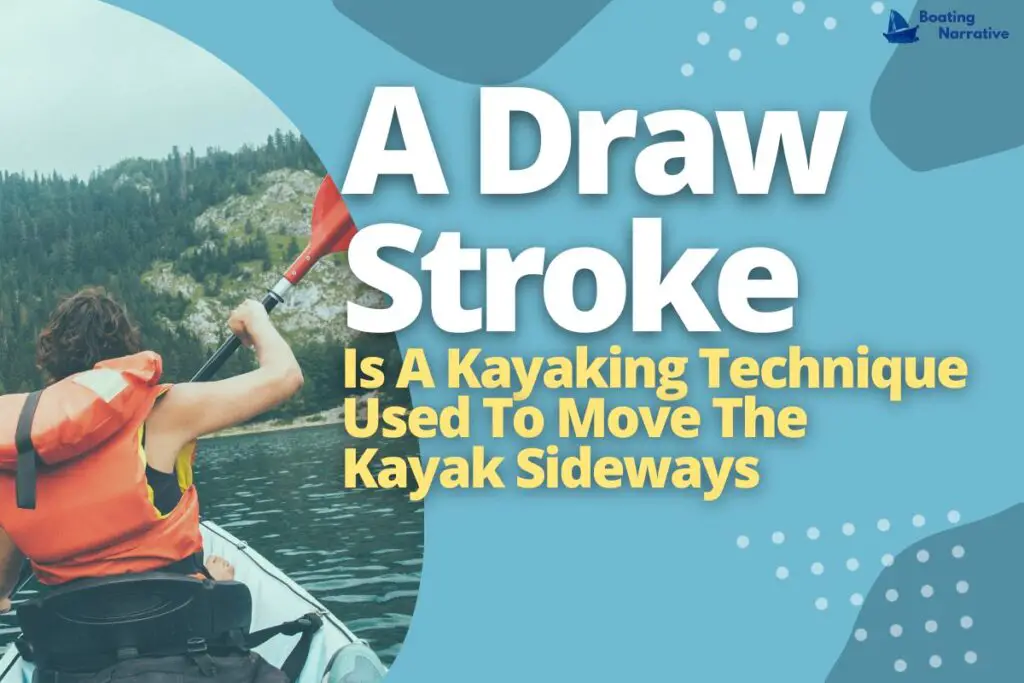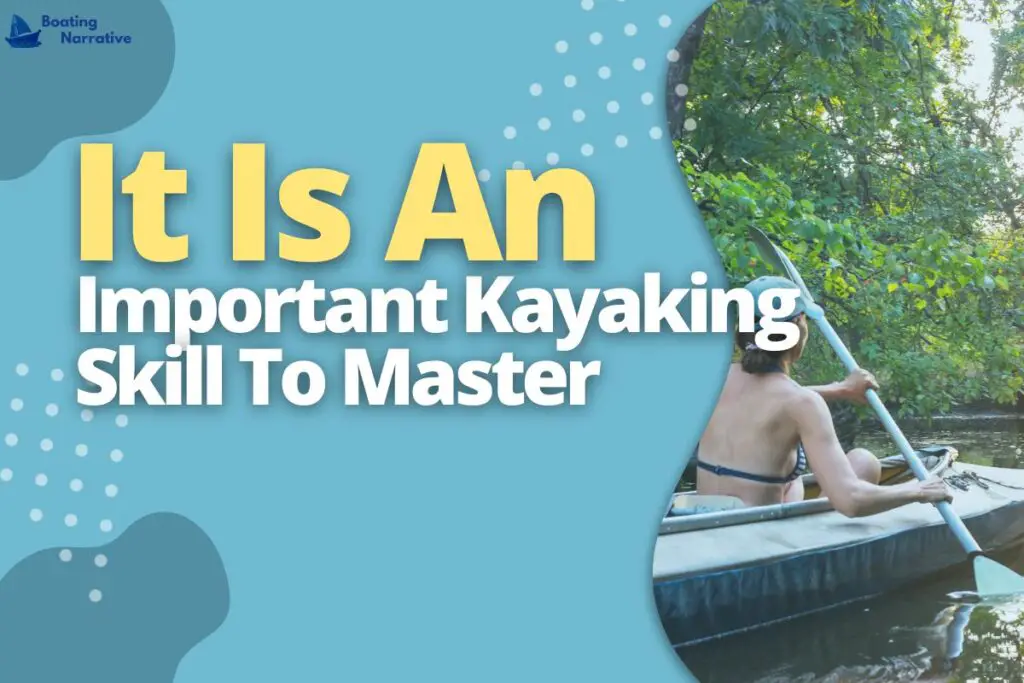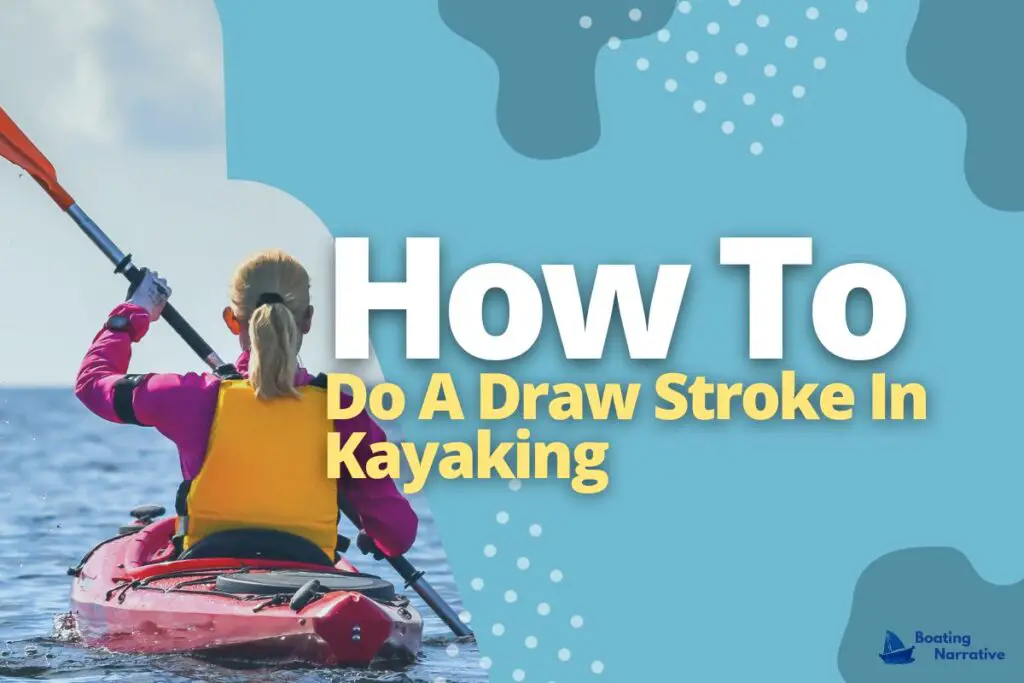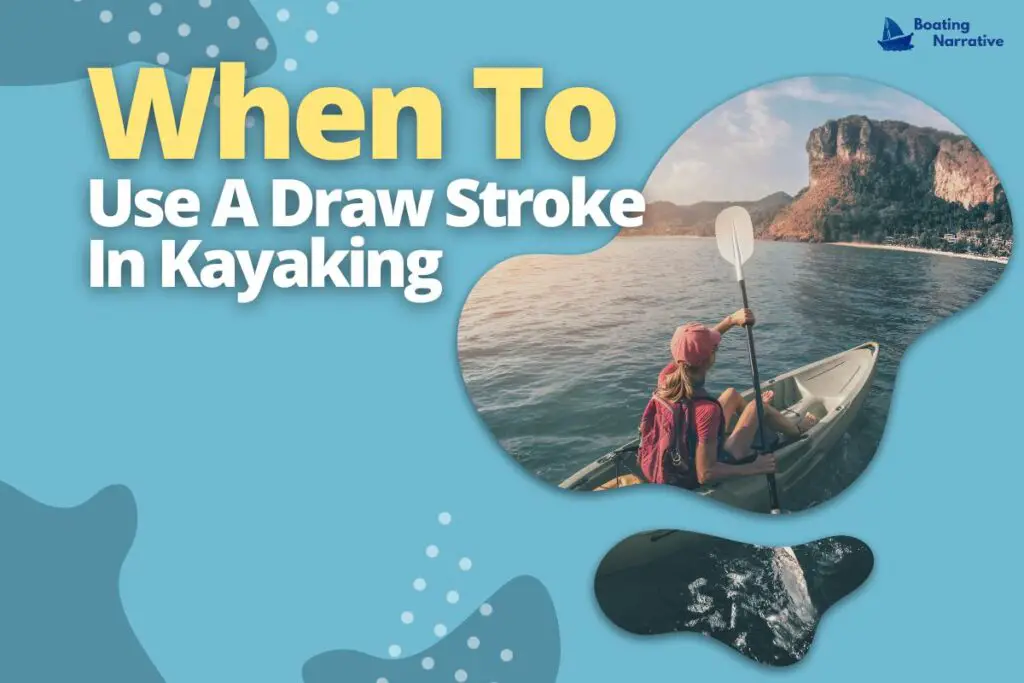When you’re out on the water in your kayak, there are a lot of different strokes you can use to propel yourself forward. But what exactly is a draw stroke?
So what is a draw stroke? A draw stroke is a paddling stroke where you use one blade of your paddle to pull your kayak towards you.
This stroke is often used when you need to turn your kayak around or when you’re trying to get close to another object. In this blog post, I’ll explain everything you need to know about the draw stroke in kayaking.
Key Takeaways
- A draw stroke is a kayaking stroke used to move the kayak sideways.
- It is done by reaching out with one paddle blade while keeping the other blade close to the kayak.
- The paddler then draws the blade through the water and returns it to the starting position.
- This stroke is often used when turning or maneuvering in tight spaces.
- It can also be used to move away from obstacles or potential hazards.

Here’s The Answer To What Is A Draw Stroke In Kayaking:
A draw stroke is a kayaking maneuver to move the kayak forward while maintaining control. It is performed using one paddle to pull the kayak towards the paddler while the other paddle is used for stability.
The draw stroke is an essential skill for kayakers of all levels, as it can be used to maneuver in tight spaces and navigate around obstacles. It is also a key component of rescue techniques, such as self-rescue and assisted rescue.
There are two main types of draw strokes: low-bracing and high-bracing. Low-bracing is often used for beginners, as it is easier to maintain balance and control with this technique.
High-bracing is more advanced and typically used when paddling in rougher waters or performing tricks.
A Draw Stroke Is A Kayaking Technique Used To Move The Kayak Sideways

A draw stroke is a kayaking technique used to move the kayak sideways. The paddle is placed in the water beside the kayak and then pulled towards the body using the upper body to provide power.
This technique is often used when paddling in tight spaces or trying to avoid obstacles. It can also turn the kayak around without having to paddle backward.
Draw strokes are an important part of kayaking and are often used with other strokes, such as the sculling stroke. They can be performed on both sides of the kayak and combined with other strokes to create different effects.
The Draw Stroke Can Also Be Used To Stop It From Moving Forward.
The draw stroke is also a great way to move the kayak sideways. You can use it to propel your kayak forward or to stop it from traveling forward.
It’s also useful for turning the kayak left or right, which can be helpful if there are obstacles in front of your boat that could cause an issue if left unchecked.
The Strength Of The Draw Stroke Depends On The Paddler’s Strength And Body Position.
There are a few things that affect the strength of the draw stroke. The first is the paddler’s strength. A stronger paddler will be able to generate more power with each stroke.
The second is body position. A paddler who is closer to the center of the boat will have more leverage and will be able to generate more power.
You may do a few things to strengthen yourself and position your body better. Make sure you are first employing the appropriate strategy.
Second, focus on building up your core and arm muscles. Third, practice regularly to build up your endurance and stamina.
The Draw Stroke Is An Important Skill For Kayakers Allowing Them To Control Their Boat In All Situations.
The draw stroke is an essential skill for kayakers to master, allowing them to control their boat in all situations.
The draw stroke is a useful skill for kayaking in all conditions and can be used to move the kayak sideways or stop it from moving forward.
The draw stroke should always be used with caution, though, because if you get into trouble while doing this maneuver, you could have problems controlling your paddleboat.
It Is An Important Kayaking Skill To Master.

It is an essential skill for kayakers to master. It is the most useful in many situations and can help you in many different ways, from getting around obstacles to crossing rivers.
A draw stroke is when you pull back on your paddle with your legs while paddling. This allows you to propel yourself forward without using much energy or effort.
It also makes it easier for beginners and intermediate kayakers who don’t have much experience yet but want some extra speed on their journey.
How To Do A Draw Stroke In Kayaking?

If you’re new to kayaking, the draw stroke may seem daunting. But with a little practice, you’ll be able to execute this move easily. Here’s how to do a draw stroke in kayaking:
- First, position your paddle parallel to the boat. Reach out with your paddle and place it in the water next to the hull of your kayak. Make sure that the blade of your paddle is perpendicular to the hull.
- Next, pull the paddle towards you, using a short and quick motion. The goal is to create turbulence beneath the kayak to turn in the direction you want it to go.
- Finally, continue paddling using a forward stroke once you’ve turned your kayak in the desired direction. This will help you maintain momentum and keep moving in a straight line.
With a little practice, you’ll be able to master the draw stroke and navigate your kayak with ease.
The Benefits Of Doing A Draw Stroke In Kayaking
The benefits of doing a draw stroke in kayaking include:
- Moving sideways When you do a draw stroke, your boat will move sideways instead of backward or forwards. This can be useful if you need to stop quickly and turn around in the water without losing momentum.
- Stopping forward motion for turning purposes (e.g., turning around). If you are paddling with momentum behind you, then using the draw stroke will help slow down your speed before stopping completely, at which point it’s possible to turn around easily. If needed, take advantage of this particular movement technique’s ability to create space between yourself and other boats/passengers along their route through open waters.
When To Use A Draw Stroke In Kayaking?

You should use a draw stroke when you need to move sideways.
- In a situation where you are trying to get out of the way of something, such as another boat or a wave coming towards you, it might be necessary to turn sideways and use your legs as brakes instead of just using your paddle. This will control how fast and far your kayak moves—it’s all about balance.
- If there is an obstacle ahead that will slow down your progress (such as rocks), it helps if one person can be responsible for steering. In contrast, another person uses their paddle as a brake so they don’t run into anything else unexpected along their path through the waterway.
What Are The Problems With Doing A Draw Stroke In Kayaking?
There are a few drawbacks to doing a draw stroke.
- It can be tiring and take some time to master.
- Doing incorrectly could cause injury to your back or neck (and possibly even lead to paralysis).
- If you do not practice regularly or have not learned how to control your paddle properly in the water before trying this stroke out on land, then there’s an increased chance of getting hurt!
If these issues sound like they would prevent you from trying this technique out with any regularity, we recommend you look into other options.
Conclusion
A draw stroke is a kayaking maneuver in which the paddler uses both hands to draw the paddle through the water alongside the kayak. This stroke turns the kayak, moves it sideways, or stops it.
The draw stroke is a vital kayaking skill to master as it gives you more control over your vessel. If you’re new to kayaking, practice this stroke with a friend or instructor before taking on any challenging waters.
So, now that you know what a draw stroke is, get out there and practice! And be sure to check back for more articles on all things kayaking right here at BoatingNarrative.

